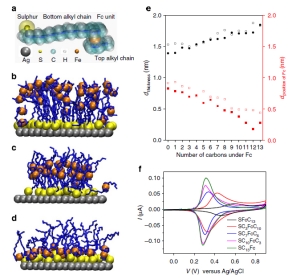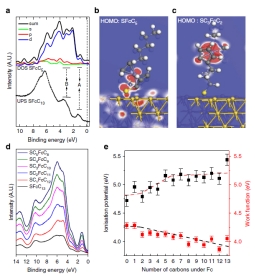Surface Characterization
Surface Characterization
As human beings enter the information age, electronic technology requires devices and systems to be “smaller”, “faster” and “cooler”. In recent years, however, people have encountered great difficulties in the process of developing to the aim of being "smaller". One is that the lithography technology cannot be used for small size. The other is that according to Moore's second law, the cost increases exponentially with the decrease of device size. If the electronic motion can be controlled in an organic molecular region, and the molecular aggregate can be made into devices with special functions, it is hopeful to break through Moore's law and greatly improve the integration of circuits and the running speed of computers. The way to achieve this complicated requirement is making molecules into components that can be manipulated individually. Molecular diversity is one of the advantages of molecular electronics over silicon-based electronics. At the same time, the conductivity can be adjusted by designing molecules with electronic and chemical structures to achieve desired applications. Over the past decades, various kinds of functional molecular devices have been theoretically designed and experimentally fabricated, such as molecular switches, molecular rectifiers, molecular wires, and molecular transistors.

Molecules are channels for charge transport and hold the principle section of molecular junctions. Three subcomponents constitute the structure of SAMs(self-assembled monolayers): backbone(s), substituent(s) and anchor group(s). By studying each of the component separately, it is possible for us to manipulate the properties of the molecular junctions. Moreover, as SAMs consist of a large number of molecules, the supramolecular structure of SAMs ought to be taken into consideration while optimizing the performance of the molecular junctions. Subtle changes in the SAM packing structure can have profound effects on their properties, especially inside tunneling junctions. Therefore we characterize our SAMs in great detail with lab-based techniques (XPS, ARXPS, electrochemistry, etc.).


XPS can provide information about the types and relative atomic ratio of elements in SAMs. ARXPS can analyze the thickness of monolayer by element ratio at different depths, which can reflect the intermolecular packing to a certain extent. The surface coverage information of the molecular junction can be obtained by cyclic voltammogram curve. The above methods can characterize the supramolecular structure of molecular junction from many aspects. By optimizing the supramolecular structure, we can get the molecular junction with the best performance. Then we will carry out junction test, using liquid metal EGaIn as the top electrode to apply voltage to the molecular junction, and get J-V (J-current density) curve, which can be used to characterize the performance of molecular devices by the value of current density J and rectification ratio R.

